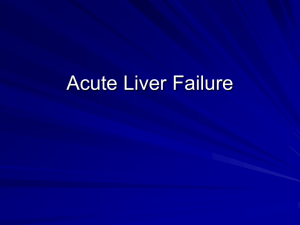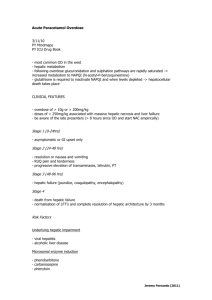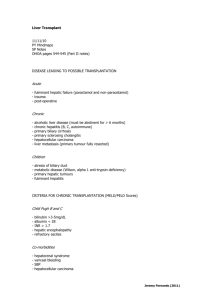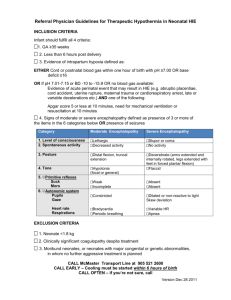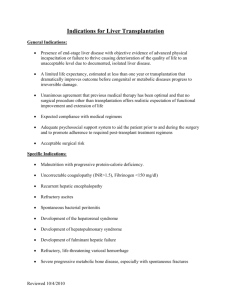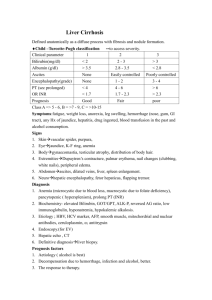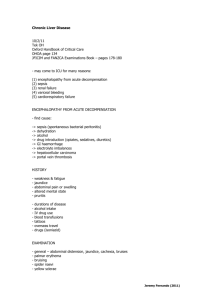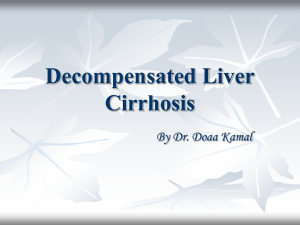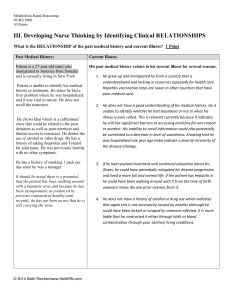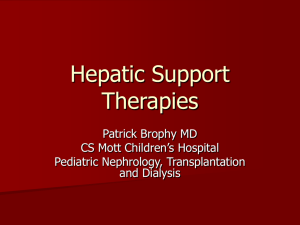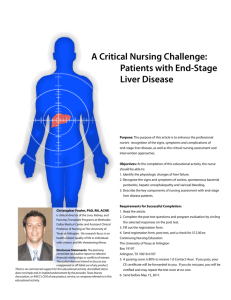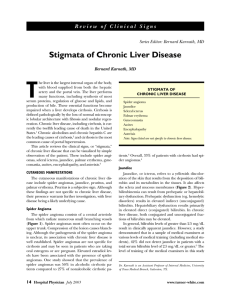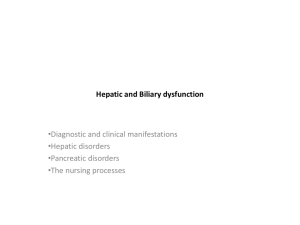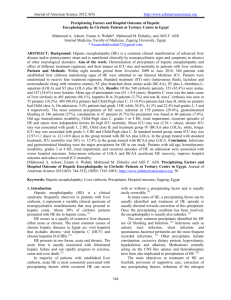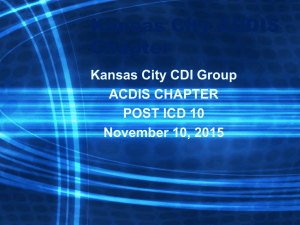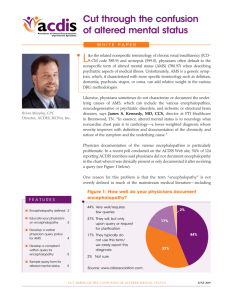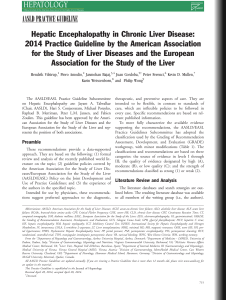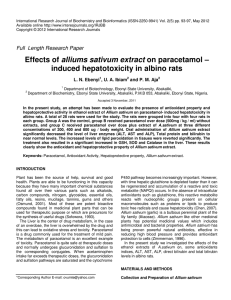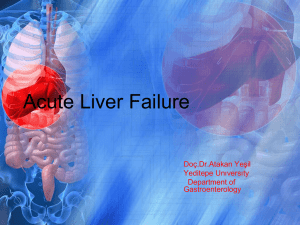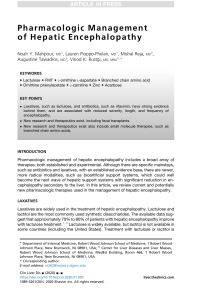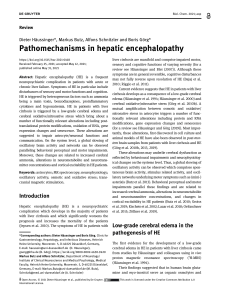Fulminant Hepatic Failure
advertisement
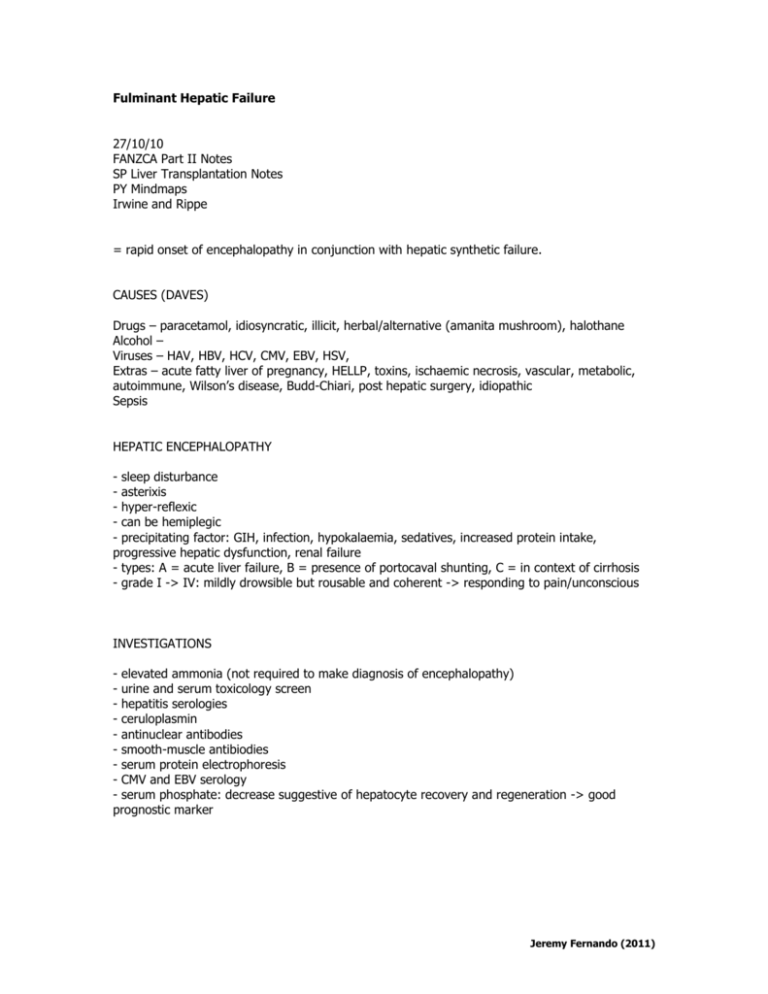
Fulminant Hepatic Failure 27/10/10 FANZCA Part II Notes SP Liver Transplantation Notes PY Mindmaps Irwine and Rippe = rapid onset of encephalopathy in conjunction with hepatic synthetic failure. CAUSES (DAVES) Drugs – paracetamol, idiosyncratic, illicit, herbal/alternative (amanita mushroom), halothane Alcohol – Viruses – HAV, HBV, HCV, CMV, EBV, HSV, Extras – acute fatty liver of pregnancy, HELLP, toxins, ischaemic necrosis, vascular, metabolic, autoimmune, Wilson’s disease, Budd-Chiari, post hepatic surgery, idiopathic Sepsis HEPATIC ENCEPHALOPATHY - sleep disturbance - asterixis - hyper-reflexic - can be hemiplegic - precipitating factor: GIH, infection, hypokalaemia, sedatives, increased protein intake, progressive hepatic dysfunction, renal failure - types: A = acute liver failure, B = presence of portocaval shunting, C = in context of cirrhosis - grade I -> IV: mildly drowsible but rousable and coherent -> responding to pain/unconscious INVESTIGATIONS - elevated ammonia (not required to make diagnosis of encephalopathy) - urine and serum toxicology screen - hepatitis serologies - ceruloplasmin - antinuclear antibodies - smooth-muscle antibiodies - serum protein electrophoresis - CMV and EBV serology - serum phosphate: decrease suggestive of hepatocyte recovery and regeneration -> good prognostic marker Jeremy Fernando (2011) MANAGEMENT Resuscitation A – intubated if unresponsive from encephalopathy (RSI to prevent aspiration) B – often have respiratory failure from pleural effusions and may have aspirated requiring mechanical ventilation C – fluid maintenance, often have a hyperdynamic circulation, vasoactive medication D – monitoring for intra-cranial hypertension: ICP bolt, mannitol, propofol, thiopentone, moderate hypothermia (32-33 C), hypertonic saline Once stabilized early consultation with Liver Transplant Centre Vigilant monitoring for infection (bacterial, fungal) Treatment Specific - paracetamol OD: N-acetylcysteine 150mg/kg LD, 50mg/kg over 4 hours, 100mg/kg over 16 hours - Amanita poisoning: penicillin - acute fatty liver of pregnancy: delivery of infant and placenta - Wilson’s disease: zinc and trientine therapy, apheresis - Acute Budd-Chiari: TIPS, surgical decompression, thrombolysis -> transplantation - HSV: acyclovir - ischaemic: restore circulation to liver - encephalopathy: lactulose -> increases ammonia elimination, metronidazole -> alter gut flora to decrease ammonia production, flumazenil (controversial) - coagulopathy: only treat with FFP if bleeding or prior to procedures, FVIIa safe and effective - NAC: continue until encephalopathy resolves - TIPS procedure (decrease portal hypertension and ascites) - short-term extracorporeal hepatic support (MARS): - ‘liver dialysis’ - Molecular Absorbent Recirculating System: detoxification method based on albumin dialysis - can be used as a bridge to transplantation (experimental) - requires two separate dialysis circuits - limited case series shows some benefit in paracetamol OD - contraindicated in active bleeding and coagulopathy - expensive - not available outside specialist centres. CRITERIA FOR TRANSPLANTATION (King’s College Criteria) Paracetamol induced fulminant hepatic failure Jeremy Fernando (2011) - pH < 7.3 or INR > 6.5 (PT > 100s) + - Cr > 300micromol/L + - grade III or IV encephalopathy Non-paracetamol induced fulminant hepatic failure - INR > 6.5 (PT > 100s) or any 3 of the following variables: (1) (2) (3) (4) (5) age < 10 or > 40 yrs aetiology – non A, non B hepatitis, halothane hepatitis, idiosyncratic drug reactions duration of jaundice before encephalopathy > 7 days INR > 3.5 (PT > 50s) bilirubin > 300micromol/L General - electrolyte balance (hypokalaemia, hyponatraemia, hypophosphataemia) Na+ restriction + diuretics -> decreases ascites frequent glucose monitoring (hypoglycaemia) nutrition (amino acids, lipids, glucose, essential elements) renal failure is common (especially in paracetamol OD -> direct renal toxic effects) feed Disposition - management in ICU - early discussion with liver transplant unit (prior to reversal of coagulopathy) - discussion with family (high mortality) COMPLICATIONS - cerebral oedema and herniation - coagulopathy - GI bleed - sepsis - renal failure - hypoglycaemia - electrolyte abnormalities - respiratory failure: impaired ventilation c/o coma, pleural effusions, ARDS, intra-pulmonary shunts, aspiration, sepsis CONTROVERSIAL ISSUES - targeted CPP management with insertion of an ICP monitor - MARS therapy - use of FVIIa Jeremy Fernando (2011)
